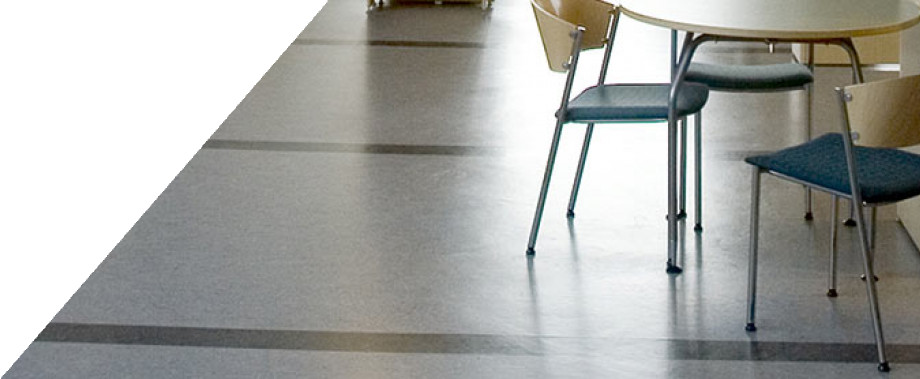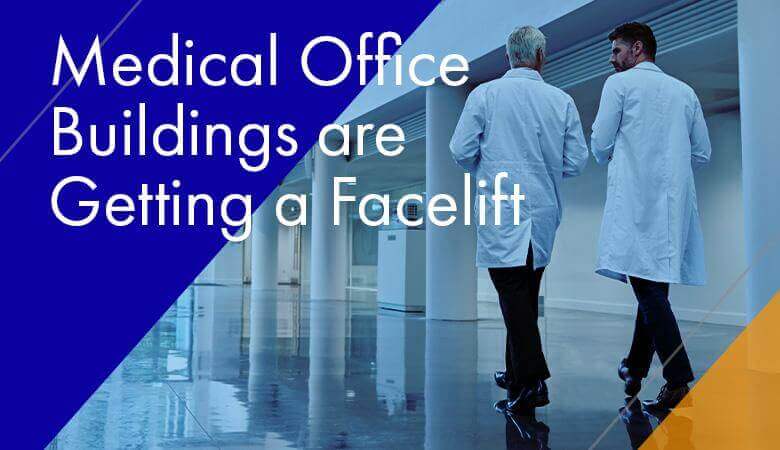Medical Office Buildings are Getting a Facelift
What that means for those who maintain them
Step inside a medical office building (MOB), or outpatient clinic, today, and you might feel like you’ve entered a spa or boutique hotel. A recent article in Building Design + Construction magazine cites emerging technologies, regulatory pressures and economic constraints as factors driving this trend toward “efficient, appealing and boundary blurring buildings.”
In the article, senior editor Julie Higgenbotham explores this changing face of health care facilities. “The development model is shifting toward a leaner, greener and more digital medical facility. Architects and designers are eschewing typical cookie-cutter outpatient facilities in favor of medical complexes where patients can receive a continuum of care,” explains Higgenbotham.
HMC Architects, a health care, education and civic architecture firm with offices nationwide, lists the following as health care facility design trends this year:
- Design Around Modern Technology
- Create Adaptable Spaces
- Use Materials that Protect Against the Spread of Infection
- Implement Biophilic Interior Design
- Provide Concierge Healthcare Services
But what does the new look and feel of MOBs mean for those responsible for keeping them clean and safe?
Here are what 4 of these trends mean for commercial cleaning companies:
Technology. As technologies continue to advance, health care facilities will incorporate more and more digital solutions to improve the level of care that patients receive. Digital kiosks that streamline the check-in process, conference and exam rooms with large video monitors and computer and phone charging stations are a few examples.
Research shows that a computer laptop or laptop keyboard is 20,000 times dirtier than a toilet seat. And with more doctors switching to electronic patient records, and sharing the same computer, keyboard bacteria are becoming a bigger problem in health care facilities as cross-contamination can lead the spread of infectious pathogens.
In addition to regular cleaning and maintenance, sensitive electronic devices can also become damaged through improper cleaning techniques.
2. Adaptable Workspaces. A recent study suggests that employees value “comfortable, inviting workspaces with flexible working arrangement and built-in communities.” The new MOBs are comprised of flexible, multi-purpose, adaptable spaces that tend to have a larger footprint, increasing the time and effort it takes to clean them.
In her article in Building and Design Construction magazine, Higgenbotham says that the newer MOBs are “more flexible, collegial and diverse. Floor plans are less boxy and are often larger, combining primary care, urgent care, specialty clinics, imaging, a lab, social services, a pharmacy and sometimes even ambulatory surgery, all under one roof.”
Patrick Fugeman, AIA, Director of Construction for Delaware’s Christiana Care Health System, says, regarding the new style of MOB, “a larger footprint is preferred, with multiple interconnections and shared spaces.”
“Hot-desking”, the practice of having no designated workspaces or desks but allowing employees to use communal computers and desks, is a popular new policy because it allows businesses to significantly cut down on wasted space and equipment costs, while still maintaining a productive workforce.
For the janitorial worker, all of this shared space means shared germs, making the proper cleaning and disinfecting of these spaces even more important and challenging.
3. Biophilic Interior Design. Biophilic interior design brings the outdoors in. According to HMC Architects, “in hospitals, biophilic design often connects communal spaces—entrances, waiting rooms, and cafeterias—to daylight and nature to promote a calming environment….” Studies have even concluded that exposure to wood paneling and plants can reduce blood pressure. But biophilic interiors are not without their maintenance challenges. Keeping indoor living plants alive (dead and dying plants are obviously unsightly), making sure expansive glass windows are always sparkling and crystal clear and maintaining natural wood and stone finishes on walls, in addition to floors, are added tasks that require specialized services.
4. Aesthetically Pleasing. With women making a majority of the health care decisions for their families, the new MOBs are tending to incorporate more luxurious and sophisticated materials and finishes that create a spa- or hotel-like vibe. Finer, and often more expensive interior materials can require more careful and special cleaning and maintenance, an additional concern for the cleaning company in charge of their upkeep.
As the face of health care continues to evolve, so must the techniques and processes commercial cleaning companies use to maintain them. At 4M, we continually provide our Team Members with the latest training, ensuring you that your cleaning partner is always prepared to maintain your facility. This is just another way we deliver the best, innovative, safe and sustainable solutions for your business. To learn more, give us a call or CLICK HERE to contact us.


